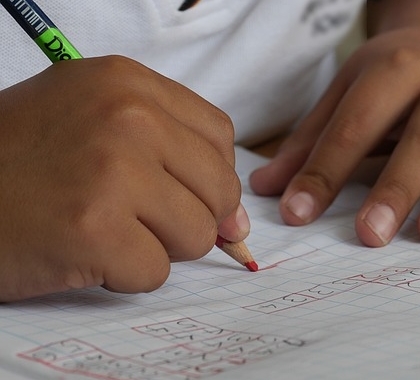Little birds are flying around everywhere these days, tweeting “school choice” as the last hope for education reform.
We find it praised on the editorial pages of Education Next, in a book by DC-based, self-styled education policy expert Chester Finn, and by Donald Trump, the next president of the United States. “Choice” was also the slogan for a question on the November ballot in Massachusetts asking voters to loosen the cap on charter schools in the state. (It went down in flames).
But “school choice” does not directly address the type of choice most parents today might desire: classroom choice—a choice of classroom type, regardless of school management approach.
In one sense, the current embrace of school choice is not surprising. It is one solution to negative parent and teacher opinions about the Common Core project. Common Core is the most “successful failure” in education reform this country has ever seen, and by “successful,” I mean that no state that adopted Common Core or its own version of the Gates Foundation-funded and -promoted skills-based standards has been able to disentangle itself from the tentacles of the Gates Foundation and the U.S. Department of Education.
Common Core has been a massive failure, however, in the sense Common Core’s standards and tests have shown no credible evidence anywhere, in any state, of making all students ready for college coursework and closing “gaps.”
School Choice Not Widespread
The kind of school choice being promoted by policymakers and “reform” governors, such as Charlie Baker (R) in Massachusetts, is not available to most schoolchildren. The question on the Massachusetts ballot to lift the state’s charter cap failed on November 5 in part because the cap would have been lifted only in big cities, most of which have mayors who don’t want more charter schools.
Despite billions in assistance from wealthy individuals and foundations that think this form of choice strengthens public education (Bill and Melinda Gates, Eli Broad, and the Walton family), school choice is available today chiefly to only a small proportion of the nation’s students (about 10 percent) and chiefly to the most disadvantaged children.
Charter schools didn’t start off that way. Many of the early ones—as well as a few of the newer ones—had distinctive programs of study, such as a classical curriculum or Chinese immersion, that appealed to specific groups of parents. Only school choice in the form of educational savings accounts (ESAs) has been of interest to a broad range of parents, although not very many have access to ESAs because in many states that allow them, parents must withdraw their children from a public school in order to set up an ESA.
Choice of Classroom Tech
The kind of choice that might attract many parents with a wide range of income levels is classroom choice: a choice between wired-up, plugged-in, high-tech classrooms with access to the internet and traditional classrooms that rely on textbooks and chalkboards. The tech-free schools that parents are attracted to can be found in many parts of the country, including in Arkansas, in Silicon Valley, and in Washington, DC.
Giving parents a choice of the kind of public school classroom their kids attend might help schools retain children whose parents homeschool them to protect them from overexposure to technology parents may be unable to use in their own homes.
Recent studies point to lower or unimproved educational outcomes for students experiencing a steady dose of high-tech teaching and learning. An Organization for Economic Cooperation and Development study found, “Investing heavily in school computers and classroom technology does not improve pupils’ performance.” A widely reported study published by the Massachusetts Institute of Technology found higher grades were obtained in courses at the postsecondary level when students were not allowed to use high-tech devices in the classroom.
Although research is not yet clear on whether high-tech teaching and learning damages students, Nicholas Kardaras, author of a recently published book on the topic, commented in a recent Time magazine article, “Students who have been raised on a high-tech diet not only appear to struggle more with attention and focus, but also seem to suffer from an adolescent malaise that appears to be a direct byproduct of their digital immersion. Indeed, over two-hundred peer-reviewed studies point to screen time correlating to increased ADHD, screen addiction, increased aggression, depression, anxiety and even psychosis.”
Classroom Choice in Action
There is a precedent for offering parents a choice of classrooms. It has been happening for more than two decades in schools offering “single-sex” classrooms. As long as parents have a choice of a “co-ed” classroom or a single-sex classroom, they are lawful, especially in schools that give both parents and teachers the opportunity to choose the type of classroom they want, as they have in Siloam Springs, Arkansas.
That kind of choice is the deeper meaning of equity, but education policymakers don’t seem to like parents’ ideas on choice and equity—only their own.
Sandra Stotsky ([email protected]) is professor of education emerita at the University of Arkansas.
This article was originally published by the New Boston Post. Reprinted with permission.





